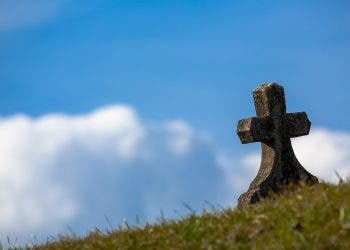
The Shroud of Turin shows the faint image of a man—bearded, injured, arms crossed. Some believe it’s the burial cloth of Jesus. Others argue it’s a medieval forgery. A new study supports the latter.
Cicero Moraes, a Brazilian 3D designer known for facial reconstructions, used digital modeling to analyze how cloth drapes over different shapes. “The image on the Shroud of Turin is more consistent with a low-relief matrix,” he told Live Science. That suggests the image came from a shallow sculpture, not a real body.
Moraes published his findings in Archaeometry and an open-access report. Using simulation software, he compared fabric impressions from a full 3D body and a low-relief figure. The low-relief version produced an image much closer to the one on the Shroud.
A Digital Shroud

The Shroud of Turin, measuring 4.4 meters by 1.1 meters, famously bears the faint front and back impressions of a man’s body, complete with apparent wounds. It was first recorded around 1354-1355 in France, and ever since, it has been the focus of religious reverence, scientific debate, and accusations of forgery.
With no prior work on the Shroud, Moraes approached it as a neutral observer. What struck him first, he said, was the “rigid and straight shapes of the body, somewhat incompatible with the anatomy of an adult human.” They looked more like the work of an artist than a real corpse.
To test the idea, he built two digital scenarios. In one, fabric was draped over a 3D model of a man, modeled using free, open-source tools like MakeHuman and Blender. In the second, he created a low-relief (bas-relief) version of the same figure, compressing its depth and placing it on a solid base. Then he simulated how linen would fall across each form.
The results were clear. Fabric over the full 3D body produced a swollen, distorted image—one resembling the infamous gold “Mask of Agamemnon,” where features stretch unnaturally when pressed into two dimensions. But the low-relief version preserved facial structure, limb proportion, and body detail.
In side-by-side comparisons with high-contrast photographs of the actual Shroud, the fabric impressions from Moraes’s low-relief model were strikingly similar.
Sculpting the Sacred
Moraes’s work doesn’t stand alone. The late 1980s carbon dating of the Shroud, conducted at three laboratories and published in Nature, placed its origin between 1260 and 1390 CE. Though disputed by some researchers, this timeframe aligns with the European medieval period—a time when low-relief depictions of saints and martyrs were widespread, often adorning tombs and cathedrals.
Moraes sees continuity between the Shroud and such funerary art. “European funerary art from the medieval period shows elements very compatible with those present in the Shroud of Turin,” he wrote in the preprint. In particular, the posture—hands folded over the groin—is typical of medieval religious representations, not of a body left to gravity after death.
Moraes doesn’t claim to know how the image was made—whether it involved pigment, heat, or chemical agents—but he argues that it bears the hallmarks of contact with a sculpted object. “A low-relief sculpture wouldn’t cause the image to deform,” he said. “It would look more like a photocopy.”
Not the First—But Perhaps the Clearest

Historians of Christianity and art have previously made similar arguments. “For at least four centuries, we have known that the body image on the Shroud is comparable to an orthogonal projection onto a plane,” Andrea Nicolotti of the University of Turin wrote in Skeptic. “Moraes has certainly created some beautiful images with the help of software,” he added, “but he certainly did not uncover anything that we did not already know.”
But Moraes’s contribution lies in the clarity of the evidence. Unlike earlier simulations, which often failed to include full side-by-side comparisons or were based on speculative physics like corona discharges or ammonia vapors, his study shows exactly how the image could have formed—with accessible tools and reproducible steps.
He made his work open-source, using only freely available software that anyone can download. “[This] highlights the potential of digital technologies to address or unravel historical mysteries,” he wrote.
Faith and Forensics
Some believers have long rejected carbon dating, citing studies that suggest the dated sample may have come from a repaired patch. A 2005 study by chemist Raymond Rogers estimated the cloth could be up to 3,000 years old, based on chemical tests of vanillin content. More recently, a 2022 analysis using X-ray diffraction methods dated a tiny sample to the first century AD—though that work has faced criticism for methodological bias and self-citation.
The Catholic Church itself has tread cautiously. After the 1989 radiocarbon results, Cardinal Anastasio Ballestrero stated, “I see no reason for the Church to put these results in doubt,” emphasizing that the Church has never officially declared the shroud to be Christ’s authentic burial cloth.
Still, others argue for a middle path. In 1987, physicist W.S.A. Dale wrote that the Shroud of Turin “may well be recognized as one of the masterpieces of Christian art.” Moraes echoes that view. Rather than a deception, he sees the Shroud as a visual sermon—meant to evoke reverence rather than forensic evidence of Jesus Christ himself.






